BCHP 9 (End of Seleucus I Chronicle)
The Chronicle concerning the last years of Seleucus ("End of Seleucus chronicle"; BCHP 9) is one of the Mesopotamian chronicles written in ancient Babylonia in the Hellenistic Period. It describes the final days of the reign of king Seleucus, who defeated his opponent Lysimachus at Corupedium, but was assassinated not much later.

The Chronicle concerning the last years of Seleucus ("End of Seleucus chronicle"; BCHP 9) is one of the Mesopotamian chronicles written in ancient Babylonia in the Hellenistic Period. It describes the final days of the reign of king Seleucus, who defeated his opponent Lysimachus at Corupedium, but was assassinated not much later.
On this webpage, a new reading is proposed; the official publication will be in I.L. Finkel, R.J. van der Spek, R. Pirngruber, Babylonian Chronographic Texts from the Hellenistic Period (2020; = BCHP; Writings of the Ancient World).
Description of the tablet
From this document two non-joining fragments survive, which cover the same lines on the reverse. The fragments come from just below the middle of the tablet. BM 32235 is the left part and is inscribed on both sides. The preserved left edge measures 2.3 cm, the broken right side 3.5 cm. The length of the tablet is 5.5 cm, the dividing line of the obverse is 3.2 cm., the longest line of the reverse measures 4.3 cm.
BM 32957 is the reverse of the right part of the tablet (the obverse is broken away). The height of the tablet is 4.7 cm, the preserved lines measure 3 cm. The lost part between the pieces measures circa one (bottom) to three centimeters (top).
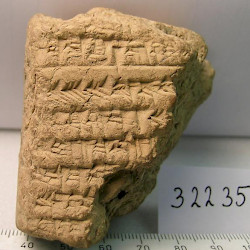 BCHP 09 End of Seleucus Chronicle (BM 32235), Obverse |
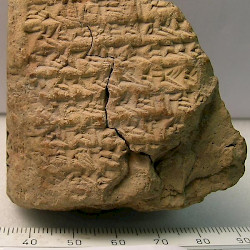 BCHP 09 End of Seleucus Chronicle (BM 32235), Reverse |
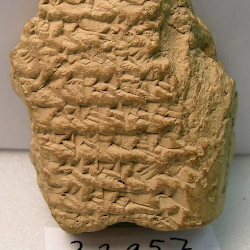 BCHP 09 End of Seleucus Chronicle (BM 32957), Reverse |
Previous editions
ABC 12; CM 33; TBH 197-200
Commentary Obverse

Lines 3'-8' refer to Seleucus' preparation for his campaign against Lysimachus, satrap of Thrace since 323 BCE, who had assumed the royal titulature in 306/5. After the Battle of Ipsus (301), Lysimachus had acquired Asia Minor north of the Taurus. With the help of Pyrrhus of Epirus he expelled Demetrius Poliorcetes from Macedonia in 287 and occupied the entire kingdom two years later. In 283 he killed his own son Agathocles at the instigation of his second wife Arsinoe II and thus alienated his nobility. Lysandra, daughter of Ptolemy I Soter and widow of Agathocles, fled with her children, her brother Ptolemy Keraunos, and Alexander, the brother of Agathocles, to Seleucus, who was at the moment in Babylon.note
When Lysimachus had permitted Arsinoe to destroy Agathocles, Lysandra ran away to Seleucus with her children and her brothers. ... They came to Babylon and begged Seleucus to go to war with Lysimachus; and at the same time Philetaerus, the treasurer of Lysimachus' wealth, who had taken the death of Agathocles badly and who was suspicious of Arsinoe, occupied Pergamon on the Caicus, and surrendered himself and the treasure through a herald to Seleucus.note
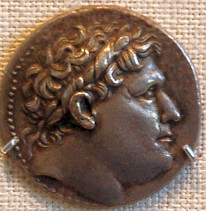
Seleucus promised to help them and he promised Ptolemy Keraunos, who was excluded from the Egyptian throne, to help him secure the Egyptian throne after his father’s death.note The chronicle now confirms that Seleucus was in Babylon indeed. He apparently started to muster an army in Babylonia in mid-summer 282 and left Babylon. Note that Pausanias claims that Seleucus had an army of both Greeks and foreigners.note
A governor (šaknu) was left in Babylonia. The title šaknu of Uruk is held by Anu-uballit alias Nikarchos in the reign of the Seleucid king Seleucus II Callinicus.note
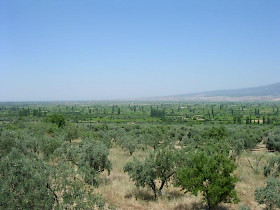
In our tablet, the campaign must have been related in the lacuna between the obverse and reverse. Seleucus crossed the Taurus for the first time since the battle of Ipsus and easily conquered Asia Minor. The city of Sardes was surrendered to him after a short siege by Theodotus, who had been appointed treasurer by Lysimachus.note Shortly afterwards Lysimachus was beaten at the battle of Corupedium, west of Sardes.note
If the Babylonian King List of the Hellenistic Period is correct in stating that Seleucus died in month VI of SE 31 (26 August-24 September 281), and if Justin is correct in his report that the battle of Curupedium took place about seven months before his death, then the battle of Curupedium took place in February 281.note In any event, the battle must have taken place in SE 30, which ended 30 March 281 BCE.
Commentary Reverse
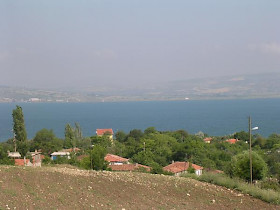
Lines 1’-4’ undoubtedly refer to Seleucus' expedition in order to conquer Macedonia. He crossed the Hellespont quickly,note because he was eager to return to his homeland.note The chronicle makes the same suggestion where Macedonia is called "his land".note However, before Seleucus reached Lysimacheia, he was murdered by Ptolemy Keraunos:
Ptolemy ... had taken refuge with him from Lysimachus; this man, an adventurouscharacter named for this reason the Thunderbolt [Keraunos], when the army of Seleucus had advanced as far as Lysimacheia, secretly murdered Seleucus.note
This murder seem to be recorded in lines 3’- 4’, but there are serious chronological problems. Justinnote dates this event to about seven months after the battle of Curupedium. According to the Babylonian King List of the Hellenistic Period, Seleucus was murdered in month VI of year 31 SE (26 August-24 September 281). If our suggestion that the murder of Seleucus is mentioned in r. 4' is right and if the month name Du'ûzu (IV) in line 8' is correctly read, then we have to assume that the murder took place before month IV, hence not in month VI. We must therefore consider the following possibilities.
- The month name in line 8' is not ŠU = Du'ûzu (IV), but DU6 = Tašrîtu (VII) which does not quite conform the traces, or there is no month name there at all.
- The murder of Seleucus is not mentioned in r. 4'. This point of view was defended by Grayson. He assumed that the rebellion had nothing to do with Seleucus' death. "There seems to be no reference in the preserved portion to the assassination of Seleucus".note

If the second proposition is right, then the murder referred to in line r. 4' cannot concern Seleucus and the "him" in the phrase "he killed him" must refer to someone else. Seleucus could have been the subject, who killed his adversary. Grammatically and idiomatically this seems problematic. The šú ("him") in ana muhhišu ("against him") would then be different from the šú in GAZ-šú ("he killed him").
The following considerations may be adduced to support Grayson's and Sherwin-White's claim.
- If Seleucus had been murdered, one would expect the chronicler to have added something like: "Antiochus, his son, ascended the throne," but nothing of the sort is there.
- In lines r. 4’-7’ information concerning "that same month" is given concerning an event in Babylon. Troops of some country seem to have arrived in Babylon and have performed offerings in the Greek fashion after which event they departed. Unfortunately it is unknown from what country these troops arrived (KUR [ .. .. l]a-gim, r. 5’). They may have been armies who had been conscripted by crown prince Antiochus in order to be sent to the aid of Seleucus for his campaign against Macedonia. The same kind of information can be derived from the following lines r. 8'-9' about the arrival of troops, elephants or silver from Bactria, to be sent to "the king" (r. 9’). That king must have been Seleucus, since no other king was introduced in the chronicle as yet.
[Obv.1'] .......
[Obv.2'] in/from the procession road of Esag[ila ...]
------------------------------------------
[Obv.3'] Year 30, month Simanu (III = 20 June - 9 July 282). [That] mon[th king Seleucus]
[Obv.4'] mustered [his troops] and to the land of S[ardes he marched .....]
[Obv.5'] the Greek [ ..... ]
[Obv.6'] he went out and in Ba[bylon? ..... ]
[Obv.7'] the governor (šaknu) from/with [ ..... ]
[Obv.8'] Esag[ila ..... ]
[Lacuna]
Reverse
[Rev.1'] [Lacuna]
------------------------------------------
Year 3[1], m[onth .. . That month, the king] mustered [his troops] from the land of Sa[rdes]
[Rev.2'] and he made [his army] cro[ss] the se[a (...)] with him [and]
[Rev.3'] to the land of Macedonia, his land, [he went. General]s? with th[eir?] troops (or: from [h]is troops)
[Rev.4'] rebelledpl against him [and PN ki]lledsg him. That month, from day [..]
[Rev.5'] to day 11, the troops of the land of [ ..... l]agim .. .. .. [(arrived?).]
[Rev.6'] They made [an of]fering in the Greek fashion [in the … on the bank of the] Euphrates [(and)]
[Rev.7'] they ate bread within it [and] they went out from it.
[Rev.8'] Month Du'ûzu? (IV). That month, day 12?, [elephants] of the land of Bactria
[Rev.9'] [x] x the king ...[ ..... arrived. Month ...]. That month, day 14?,
[Rev.10'] ....................
[Broken off]